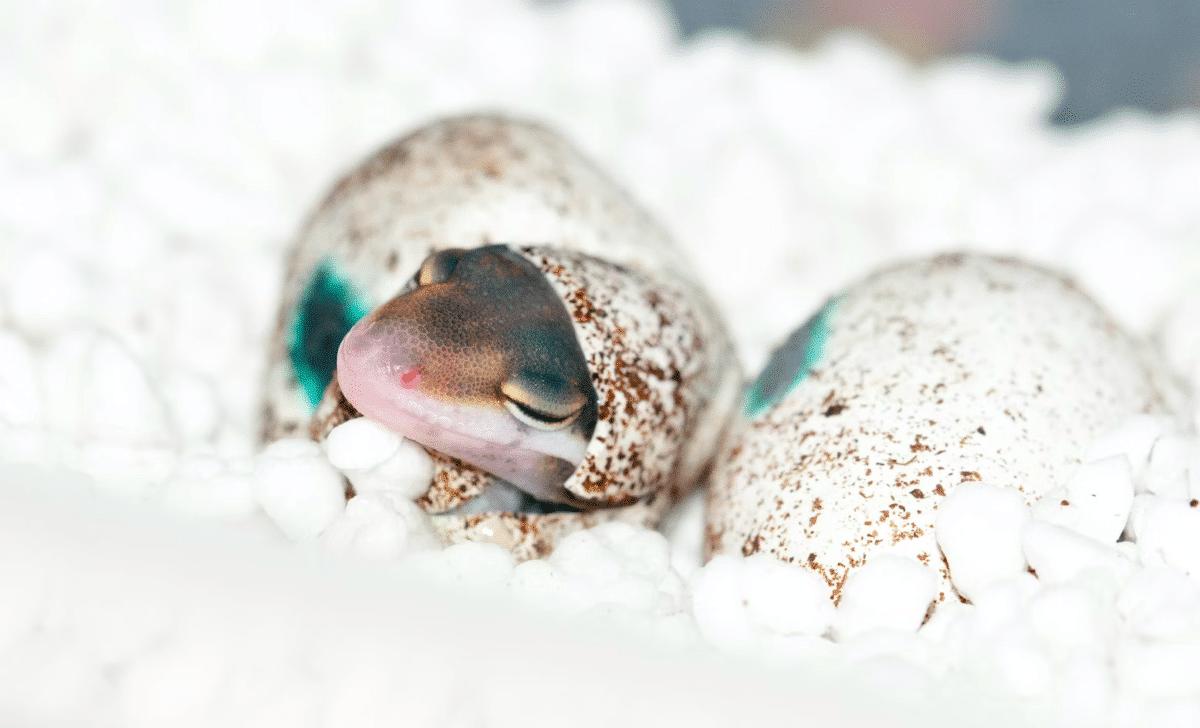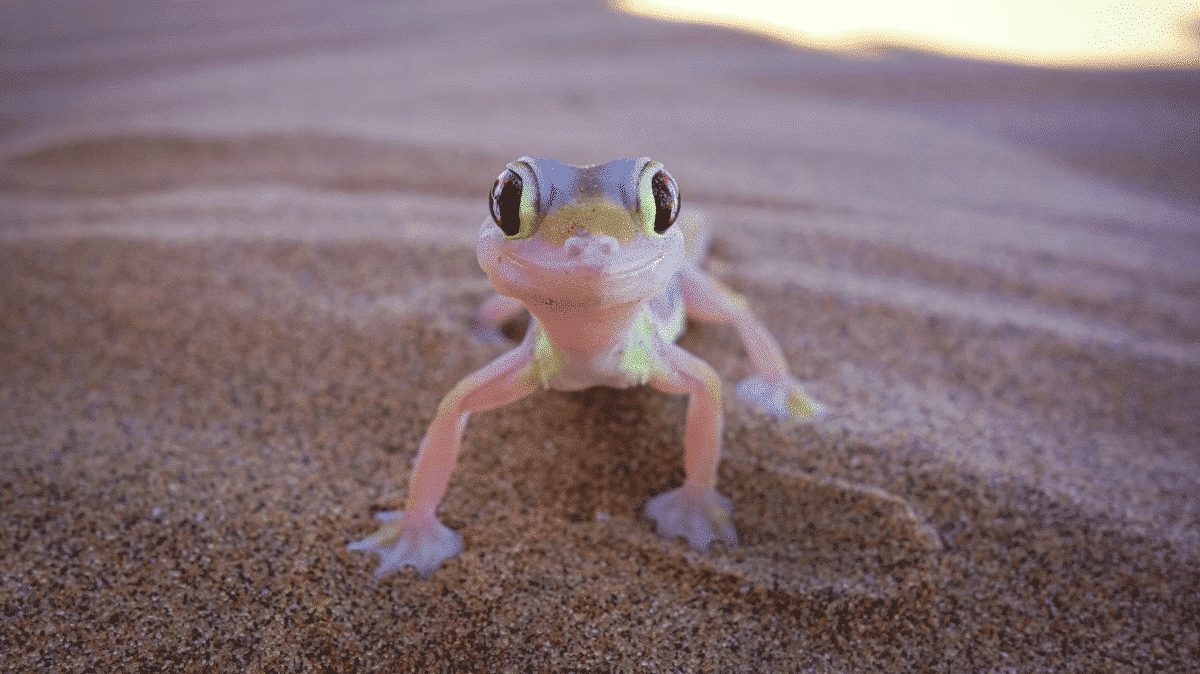Welcome to how lizards become lizards: Lizard Eggs.
Lizards have been on Earth for a very long time, and their style of reproduction is fascinating. Eggs are a crucial part of the life cycle of these reptiles and play an essential role in their survival. The eggs come in a wide variety of shapes, sizes, colors, and textures and comprise a complex mixture of organic and inorganic materials.
Lizard eggs are also highly susceptible to environmental factors, such as temperature and humidity, and can be affected by habitat destruction and pollution. Studying eggs can provide valuable insights into the biology and ecology of these animals, as well as help inform conservation and management efforts.
Here, we will explore the characteristics of lizard eggs, their laying and incubation behavior, the environmental factors that affect them, and their various uses.

Want to slither ahead? Click below
About

Lizard Eggs are the reproductive structures of various species of lizards, including geckos, skinks, and iguanas. They are unique in shape, size, and color and range from small, round eggs to elongated, elliptical eggs. They are often covered with a tough, protective shell composed of calcium carbonate and other minerals, which helps prevent desiccation and support the developing embryo.
The importance of lizard eggs cannot be overstated, as they play a critical role in the survival and evolution of these fascinating reptiles. They allow lizards to reproduce and pass their genes to the next generation. They are also food for predators, such as snakes and birds, which helps to maintain a balance in the ecosystem.
Characteristics

They are unique and fascinating structures in various shapes, sizes, colors, and textures. Here are some of the critical characteristics:
- Shape And Size:
The shape and size can vary widely depending on the species of lizard and the size of the female. Some are round, while others are elliptical, twisted, or irregular. The size can range from a few millimeters in diameter to several centimeters long.
- Color And Texture:
They can come in various colors, from pure white to dark brown, and even speckled or mottled. The texture can also vary, with some eggs being smooth and shiny and others rough or bumpy. These colors and textures can help to camouflage the eggs and protect them from predators.
- Composition Of The Eggshell:
The eggshell comprises a complex mixture of calcium carbonate and other minerals. The eggshell is essential for protecting the developing embryo and preventing dehydration.
- Internal Structure Of The Egg:
Inside the egg, the embryo develops in a yolk sac surrounded by a fluid-filled membrane. The embryo’s development can vary depending on the lizard species and the incubation conditions.
Types Of Lizards That Lay Eggs

Many species of lizards lay eggs, including geckos, skinks, and iguanas.
- Reproductive Cycles of Lizards:
The reproductive cycles of lizards can vary depending on the species, with some laying eggs once a year while others may lay multiple clutches of eggs throughout the year.
- Nesting Behavior and Site Selection:
Lizards may lay their eggs in communal nests, individual burrows, or other hiding places. The female lizard may select a nesting site based on temperature, humidity, and predation risk.
- Incubation and Hatching Process:
The incubation period of eggs can vary greatly depending on the species and incubation conditions. During this time, the female may guard the eggs and regulate the temperature and humidity in the nest to ensure proper development. When the eggs hatch, the baby lizards emerge from the eggshell and begin their journey into the world.
If you want to know how to care for Lizard Eggs, click Here.
Environmental Factors Affecting Lizard Eggs

They are vulnerable to various environmental factors impacting their development and survival. Here are some of the critical factors that can affect lizard eggs:
- Temperature and Humidity:
Temperature and humidity are critical factors for the development of lizard eggs. Different species of lizards have specific temperature and humidity requirements for optimal egg development. If the climate is too low or too high, it can lead to developmental abnormalities, deformities, or embryo death.
- Nest Predation and Protection:
Nest predation is a significant threat to lizard eggs, with many predators targeting lizard nests. Predators such as birds, snakes, and mammals can quickly locate lizard nests and consume the eggs. Female lizards may take steps to protect their eggs, such as burying them deeply, hiding them in crevices or caves, or even guarding them.
- Effects of Pollution and Habitat Destruction:
Pollution and habitat destruction can also impact the survival of lizard eggs. Pollution can negatively affect egg development by altering temperature, humidity, and other factors. Habitat destruction can also result in the loss of suitable nesting sites for lizards, leading to a decline in lizard populations.
Uses of Lizard Eggs

Lizard eggs have several important uses, including:
- Scientific Research and Study:
Lizard eggs are valuable for scientific research and study, particularly in ecology, evolution, and developmental biology. Scientists can use them to study the effects of environmental factors on the development and evolution of egg-laying behavior in lizards.
- Traditional Medicine and Food Sources in Some Cultures:
In some cultures, they are used in traditional medicine to cure various ailments. Lizard eggs are also eaten as a food source in some cultures, particularly in parts of Asia.
- Economic Value in the Pet Trade Industry:
They are also valuable in the pet trade industry, as many species of lizards are popular pets. Breeding and selling lizard eggs can be lucrative for those involved in the pet trade.
Wrapping Up with Lizard Eggs
In conclusion, lizard eggs are unique structures with various characteristics and behaviors. The shape, size, color, and texture can vary significantly between species, and the composition and internal structure of the egg are essential for the embryo’s development. Environmental factors such as temperature, humidity, and predation can significantly impact the survival of lizard eggs.
Lizard eggs also have important uses, including scientific research, traditional medicine, and economic value in the pet trade industry. Studying lizard eggs is essential for understanding the biology and ecology of these fascinating creatures.
Thanks for following along with us! Next up, How to Catch a Lizard.
Join our Forum for free today!

- Big Cats Love Mouthing Affection - July 22, 2024
- Kind Elephant Merciful To Lion Cubs - July 22, 2024
- Beachgoers Save Massive Shark Stranded In Florida - July 22, 2024


